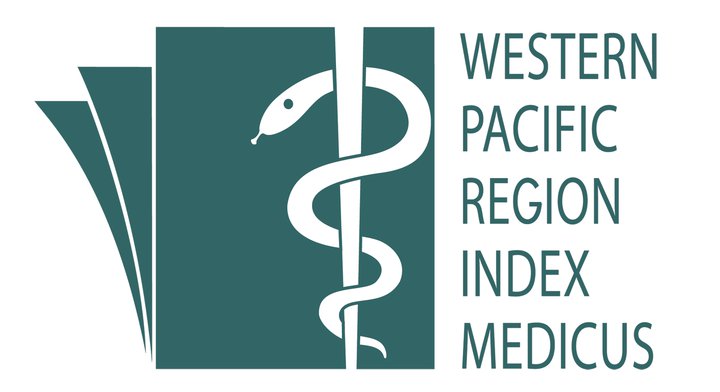Perception of Foreign Students on Food Safety and Hygiene Practices among Food Handlers in Malaysian Restaurants: Public Health Perspective
Keywords:
Food safety - food borne diseases - foreign studentsAbstract
Introduction
Influx of foreign students in Malaysia calls for a study on safety of food in Malaysia restaurants as perceived by them.
Objective This study aims to investigate perception of foreign students regarding food safety and personal hygiene practice of food handlers in Malaysia restaurants.
Methods
A six sections Likert scale questionnaire was used. A total of 350 questionnaires were distributed during this study between March 2011 and March 2012 to the international students from 26 countries of the world in various public and private institutions of higher learning in Klang Valley, Malaysia.
Results
Among the distributed questionnaires, only 155 were correctly filled, retrieved and analyzed. Ninety-one respondents (59%) were male while 63 (41%) were females. A total of 107 (69%) were undergraduates and 29 (19%) were postgraduate students. One hundred and thirty-nine (90%) respondents were local or foreign restaurants. Eleven respondents (7%) did not patronize any of the restaurants. Among factors influencing choice of restaurants are closeness to residence, price of food and quality of food were the most important factors 62 (38%). Twenty-seven (28%) eat in restaurants because of the similarity of the food to that of their home country. Of the most preferred food, Nasi ayam, 89 (57%) top the list, next was Nasi goreng ayam, 14 (14%) and African food, 23 (15%). Nasi lemak was the least food preferred 3 (2%). A total of 104 (67%) respondents were of the opinion that handlers kept short nails, 91 (59%) do not pick nose, 108 (55%) stated that food handlers cough or sneeze while handling food. Ninety-eight respondents (64%) also stated that serving of food with unprotected hands were observed.
Conclusions
The result of this study showed that although food handlers are aware of the need for personal hygiene, more awareness needs to be created.
Â
References
Paige M. International Students Cross-Cultural Psychological Perspectives. In: R. Brislin (eds.). Applied Cross-Cultural Psychology. Newbury Park, California: Sage; 1990.
Yusliza MY & Shankar C. Adjustment in International Students in Malaysian Public University. International Journal of Innovation, Management and Technology. 2010; 1(3): 275 -278.
Isara AR & Isah EC. Knowledge and practice of food hygiene and safety among food handlers in fast food restaurants in Benin City, Edo state, Nigeria. Postgraduate Medical Journal. 2009; 16(3): 207-12.
Abhay BM, Naveeta K, Gargi AM, Ramchandra CG, Ajay KD & Vasant VW. Health Status and Personal Hygiene among Food Handlers Working at Food Establishment around a Rural Teaching Hospital in Wardha District of Maharashtra, India Global Journal of Health Science. 2010; 2(2): 198 -206.
Okojie OH, Wagbatsoma VA & Ighoroge AD. An assessment of food hygiene among food handlers in a Nigerian university campus. Nigeria Postgraduate Medical Journal. 2005; 12 (2): 93-6.
Chukwuocha UM, Dozie IN, Amadi AN, Nwankwo BO, Ukaga CN, Aguwa OC, Abanobi OC & Nwoke EA. The knowledge, attitude and practices of food handlers in food sanitation in a metropolis in south eastern Nigeria. East Africa Journal Public Health. 2009; 6 (3): 240-3.
Hazrina G, Mohhidin O, Nasyira MN & Roslan NA. Food hygiene Knowledge, attitudes and practices among food handlers in restaurant in Selayang area. In UMT 11th International Annual Symposium on Sustainability Science and Management 9th – 11th July 2012, Terengganu, Malaysia; 2012.
Siow ON & Norrakiah AS. Assessment of Knowledge, Attitudes and Practices (KAP) Among Food Handlers at Residential Colleges and Canteen Regarding Food Safety. Sains Malaysiana. 2011; 40 (4): 403–410.
Anant AT & Anjali PK. Assessment of personal hygiene of canteen workers of government medical college and hospital. National Journal of Community Medicine. 2011; 2 (3): 448-451.
Mulugeta K & Bayeh A. The sanitary conditions of food service establishments and food safety knowledge and practices of food handlers in Bahir Dar town. Ethiopian Journal Health Science. 2012; 22 (1): 27 - 35.
Zain MM & Naing NN. 2002. Socio demographic characteristics of food handlers and their knowledge, attitude and practice towards food sanitation: A preliminary report. Southeast Asian Journal of Tropical Medicine and Public Health.2002; 33(2): 410-7.
FAO. Training manual for environmental health officers on safe handling practices for street foods. 2001. Available from http://kharahais.gov.za/files/health/03.doc.
Askarian M, Kabir G, Aminbaig M, Ziad A. Memish ZA & Jafari P. Knowledge, attitudes, and practices of food service staff regarding food hygiene in Shiraz, Iran. Infections Control and Hosp Epidemiology. 2004; 25(1): 16-20.
Roberts L, Smith W, Jorm L, Patel M, Douglas RM, & McGilchrist, C. Effect of infection control measures on the frequency of upper respiratory infection in child care: a randomized, controlled trial. Pediatrics. 2012; 105: 738-42.
Niffenegger JP. 1997. Proper hand washing promotes wellness in child care. Journal of Pediatric Health Care. 1997; 11: 26-31.
Master D, Hess Longe SH & Dickson H. Scheduled hand washing in an elementary school population. Family Medicine. 1997; 29: Page 336-9.
Ryan MA, Christian RS & Wohlrabe J. Handwashing and respiratory illness among young adults in military training. American Journal of Preventive Medicine. 2011; 21:79-83.
Curtis V & Cairncross S 2003. Effect of washing hands with soap on diarrhoea risk in the community: a systematic review. Lancet Infectious Disease. 2003; 3: 275-81.
Downloads
Additional Files
Published
How to Cite
Issue
Section
License
IJPHR applies the Creative Commons Attribution (CC BY) license to articles and other works we publish. If you submit your paper for publication by IJPHR, you agree to have the CC BY license applied to your work. Under this Open Access license, you as the author agree that anyone can reuse your article in whole or part for any purpose, for free, even for commercial purposes. Anyone may copy, distribute, or reuse the content as long as the author and original source are properly cited. This facilitates freedom in re-use and also ensures that IJPHR content can be mined without barriers for the needs of research.






